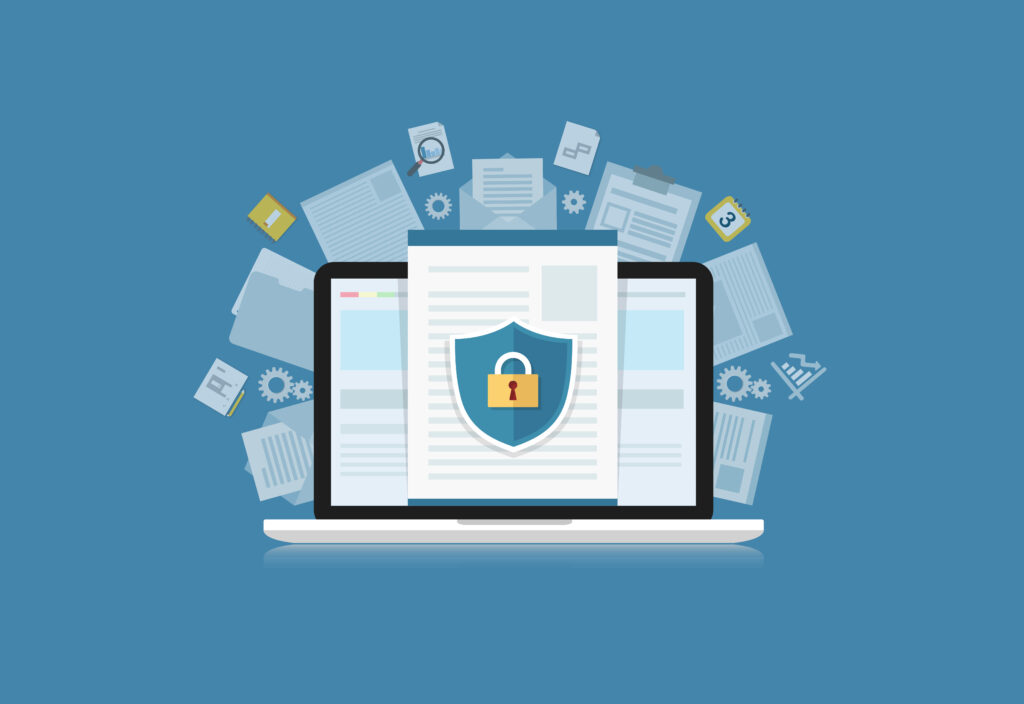Gone are the days when your tech support team was just down the hall, ready to diagnose any dilemma ailing your devices. Even if you don’t have an IT professional on-premise, every office has their de facto “tech expert”. Maybe that person is you, maybe it’s an intern, accountant, whomever. But now that your employees are scattered, what is the proper protocol for handling complex technical difficulties? Or, more importantly, what is the proper protocol for proactively deterring these issues? Google is always ready and willing to answer your questions, but sometimes your employees will require more than a search query.

Technical malfunctions are an issue in more ways than one. In the midst of the most abrupt shift businesses—and, frankly, modern society—have ever seen, hackers, scammers, and delinquents across the world are digging their seedy fingers into any vulnerability they can detect.
Protecting your business against threats starts with investing in the proper technology, but it goes far beyond that. Your employees need to understand the importance of protecting your business’s data, and need to be aware of the dangers that often lie in plain sight. With the persistent and continued entanglement of personal and business information comes increased responsibility on behalf of you and your employees.
Time Is Money
If your business has never been exposed to a data breach, then consider yourself lucky. Cybercrime has consistently been on the rise for years now, but the COVID-19 pandemic has given rise to even more attacks across the globe. With an unprecedented amount of people working from unsecured workstations, it has been a proverbial field day for cybercriminals.
Now, you may be thinking “Why would someone hack my small business? We’re not Apple or Amazon with trillions in the bank.” It’s a fair point, but put yourself in the shoes of the criminals for a minute. Would you feel more apt to launch an attack on an organization with arguably more money, power, and cybersecurity systems than most world governments or on a small to medium sized business with (relatively) less money, power, or cybersecurity infrastructure?
From the eyes of the criminal, it seems wise to steal $1000 from 100 different uber-vulnerable small businesses rather than heist $100,000 from a Fortune 500 company. Insidious as these criminals are, they are savvy enough not to pick fights they cannot win.

According to a study published on Vox.com, 1 in 5 small businesses have fallen victim to a cyberattack. Of those, 60% go out of business within 6 months. Considering that—according to IBM—the average time from identification to containment of a security breach is 280 days, your business simply can’t afford not to take preventive measures against cybercrime.
Securing The Workstation
Many businesses have been fortunate enough to be able to give employees the hardware they need to continue operating remotely. For others, they’ve had to rely on their employees’ personal computers to get the job done. By now, in either case, you’ve probably read up on standard security measures to take. You’ve mandated VPN software, ensuring passwords don’t actually contain the word “password”, and educated your employees on the dangers of phishing emails.
Even if you put all of these procedures in place, sometimes they are simply not enough. No business is unique—true cybersecurity can’t be achieved with a “one-size-fits-all” approach. By using software that can mold to the contour of your business’s specific needs, you’ll be able to have the peace of mind knowing that your data is safe.
With all of your employees operating, communicating, and sharing documents under the same umbrella of security, you’ll be able to better handle any issues that arise. More importantly, you’ll be able to prevent them from even happening in the first place.
People, Not Computers, Make Choices
As a business owner, your job is not only to put proper security protocols in place, but to ensure they are actually being followed. A chain is only as strong as its weakest link—it only takes one less-than-diligent employee to compromise your data. How can you make sure security measures are consistently being adhered to without disrupting the atmosphere of trust that has become so crucial to remote work?

The answer is proper training. Whether that is coming directly from you, your IT department, or an outside agency enlisted to help your business, it is critical that your employees know what’s at stake. Cybercriminals are cunning, heartless, and unrelenting—they will always be pursuing new tactics of subversion. When your employees are properly educated and trained on how to best hinder the actions of malevolent actors, they will better understand the gravity of the situation.
Act Early, Remain Diligent
Not all problems can be avoided, especially during a time like this. But if you find your business playing catch-up when it comes to a security breach, it may already be too late. By taking tangible, preventative steps to install the proper systems you can rest assured that you’re doing everything in your power to keep your business afloat.
Keep your employees in the loop—their understanding of the critical role they play in data security is paramount. Cybercrime will never truly cease to exist, but when it comes to your business, your fate doesn’t have to be determined by anyone but you.

